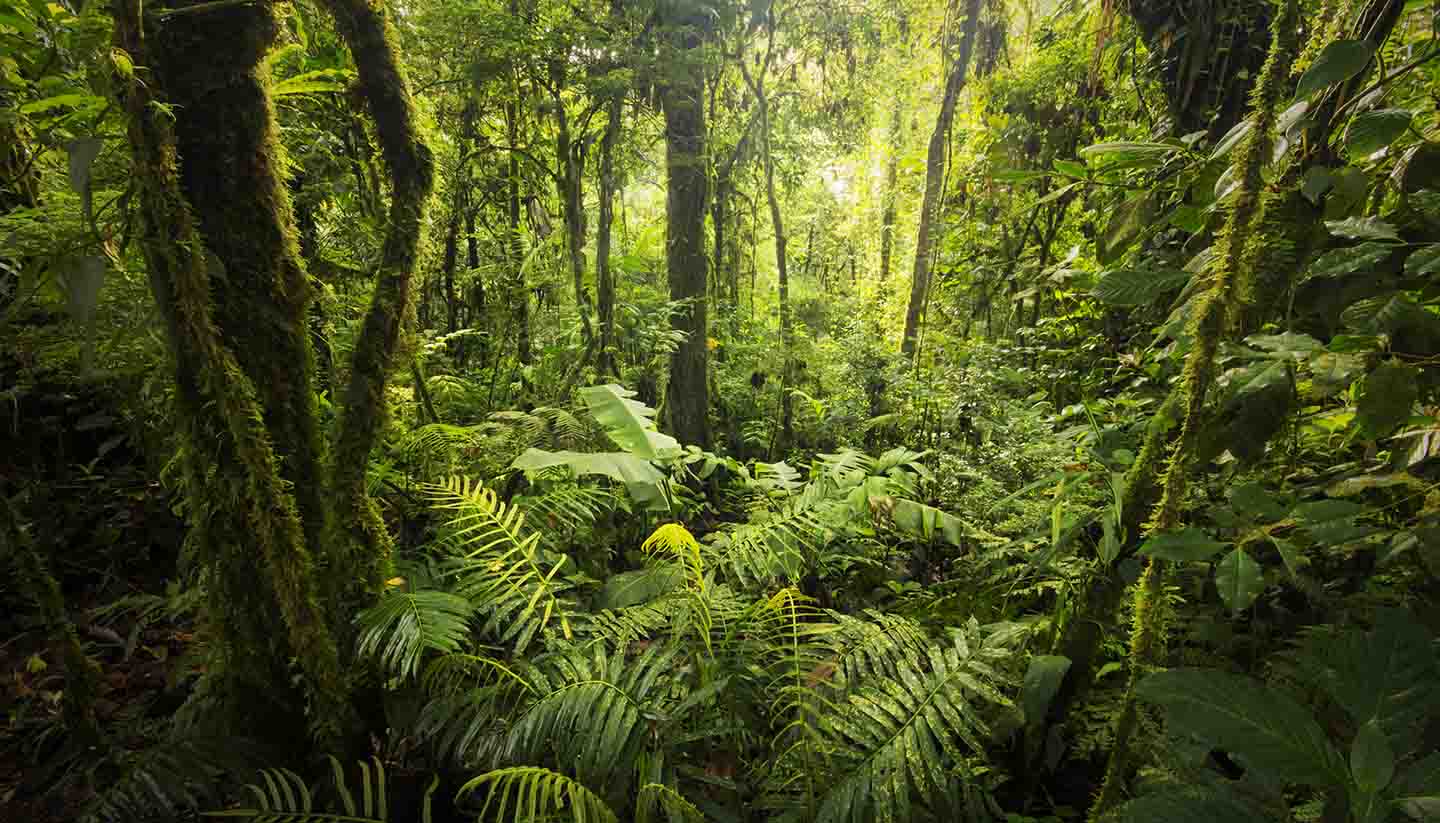Costa Rica Weather, climate and geography
Weather and climate
Best time to visit
Located around 10° north of the Equator, Costa Rica enjoys a tropical climate year-round.
Costa Rica’s Pacific coast
Divided into North Pacific, Central Pacific and South Pacific regions, this long stretch of coastline attracts many visitors to its sandy beaches and secluded coves. December to March is the best time to visit Costa Rica's Pacific coast, particularly the northern and central parts, as this is the dry season with the most sunshine. As you move further south, the dry season becomes less defined. In other words, there are rainy days even during the dry season.
May to October is the wet season along the Pacific Coast, so expect hot and humid weather, which can be uncomfortable to some travellers. April is generally the warmest month, while December is the coolest month.
In the coastal town of Puntarenas on the Gulf of Nicoya, the average high ranges from 27-29°C (81-84°F) year-round except in April, when the mercury often climbs above 30°C (86°F).
The Osa Peninsula (Peninsula de Osa) on Costa Rica's South Pacific Coast has an average high of 28°C (82°F) throughout the year.
The central valley and San José
Spanning from San Ramón (Alajuela province) in the west to Paraíso (Cartago province) in the east, Costa Rica's central valley is the setting for the country's capital, San José. Sitting at 1,172m (3,845ft) above sea level, San José has a tropical climate with warm days and cool nights. The best time to visit San José is from January to March when the weather is warm and has little rain. The rain starts from May and lasts till October, with September being the wettest month. April is usually the warmest month with an average high of 30°C (86°F) and an average low is 19°C (66°F).
Costa Rica's Caribbean coast
Stretching from Barra del Colorado in the north to Sixaola in the south, Costa Rica's Caribbean coast receives heavy rainfall throughout the year with no distinct dry season. Hurricanes may also affect the Caribbean coast, especially in October and November.
February, March and September are widely considered to be the best time to visit Costa Rica's Caribbean coast – these are the 'dryer' months, although you may still get fourteen to seventeen rainy days in a month.
Limón, or Puerto Limón, is the largest city on the Caribbean coast. It has a tropical rainforest climate with an average high of 30°C (86°F) year-round. In other words, it is hot and humid.
Required clothing
Lightweight cottons and linens are fine most of the year, with warmer clothes for cooler evenings. Waterproofing is necessary during the rainy season. Loose-fitting clothing is best. Wear neutral browns and greens for birding and wildlife viewing. Always bring mosquito repellent, along with appropriate footwear for whatever activities you're planning. Check the weather forecast before leaving for your trip.
Geography
Located on the Central American isthmus, Costa Rica borders the Pacific Ocean to the west, the Caribbean Sea to the east, Nicaragua to the north and Panama to the south.
Costa Rica sits along the Pacific Ring of Fire. Volcanoes, both active and dormant, run from the northwest to the central valley and continue onwards to the southeast. The Central Volcanic Mountain Range draws the most visitors, as it features Arenal (which erupts from time to time) and Irazu (the country's highest volcano). About 45km (28mi) west of Irazu is San José, the country's capital.
Costa Rica's highest peak is Cerro Chirripó (3,821m or 12,536ft), which is part of the Talamanca Range in the southeast. From the summit, you can see the Caribbean Sea and the Pacific Ocean on a clear day.
Along both coastlines, lowlands, wetlands, and miles of sandy beaches backed by dense tropical rainforest are the defining characteristics.


